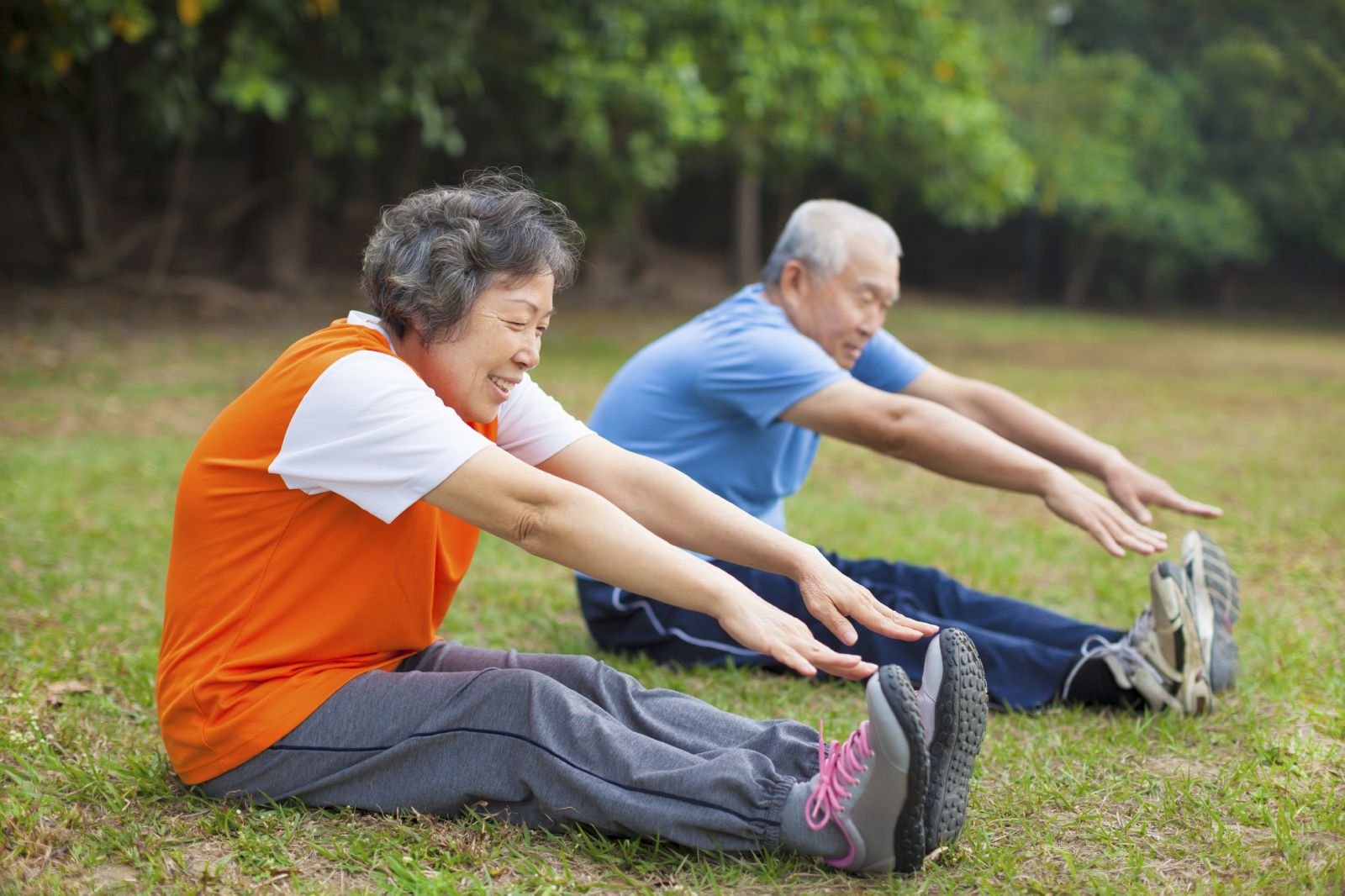| | How stretching keeps your joints moving  Your range of motion — how far you can move a joint in various directions — is determined by many things, starting with the inner workings of the joints involved. Also important is the amount of tension in the muscles surrounding the joint, which can be affected by scarring or your habitual posture (passive factors), or by involuntary muscle spasms or purposeful muscle contractions (active factors). Your range of motion — how far you can move a joint in various directions — is determined by many things, starting with the inner workings of the joints involved. Also important is the amount of tension in the muscles surrounding the joint, which can be affected by scarring or your habitual posture (passive factors), or by involuntary muscle spasms or purposeful muscle contractions (active factors). Stretching exercises can help extend your range of motion. To understand how, it helps to know what joints, tendons, and ligaments do: Get your copy of Stretching
Stretching is an excellent thing you can do for your health. These simple, yet effective moves can help you limber up for sports, improve your balance and prevent falls, increase your flexibility, and even help relieve arthritis, back, and knee pain. Whether you';re an armchair athlete or a sports enthusiast, this Special Health Report from the experts at Harvard Medical School will show you how to create effective stretching routines that meet your needs and ability.
 | Joints are the junctions that link bones together. The architecture of each joint — that is, whether its structure is a hinge, pivot, or ball-in-socket — determines how the bones can move. Tendons are flexible cords of strong tissue that connect muscles to bones. Ligaments are tough, fibrous bands of tissue that bind bone to bone, or bone to cartilage, at a joint. An example is the anterior cruciate ligament (ACL), one of five ligaments that together control the movements of the knee. Among other things, the ACL keeps the knee joint from rotating too far. When you stretch, you're working muscles and tendons rather than ligaments. Ligaments are not supposed to be elastic. An overly stretchy ligament wouldn't provide the stability and support needed for a safe range of movement. For more on ways to improve your strength and flexibility, buy Stretching, a Special Health Report from Harvard Medical School. | | News and Views from the Harvard Health Blog Existing drugs for lowering triglycerides aren’t that good at reducing heart attack risk. That’s why a report on a new way to lower triglycerides, published in today’s New England Journal of Medicine, is generating some excitement among cardiologists.  | | Stretching to help arthritis pain  Don't let arthritis pain keep you from staying physically active. The less you move your joints, the less likely they'll maintain their full range of motion. Over time, the surrounding muscles can shorten, making it that much harder to keep moving. That can lead to a host of other problems, including weight gain, difficulty walking, and poor balance. A regular stretching routine can help you avoid this vicious cycle. Don't let arthritis pain keep you from staying physically active. The less you move your joints, the less likely they'll maintain their full range of motion. Over time, the surrounding muscles can shorten, making it that much harder to keep moving. That can lead to a host of other problems, including weight gain, difficulty walking, and poor balance. A regular stretching routine can help you avoid this vicious cycle. If you have arthritis, it's best to talk to your doctor before starting any exercise routine, including a stretching routine. Once you get the okay, try these tips to help you get started: Warm up thoroughly. Take extra time to warm up before you stretch. A hot shower or bath, a heated pool, or even warm compresses or a heating pad can also relax stiff joints before you stretch. Stretch during your least painful time of day. Morning won't work for some people, since that's when their joints are stiffest. You might do your stretches when pain relievers are at their peak effectiveness. Adapt stretches. Use pillows or rolled-up towels to adjust your range of motion in each stretch. Choose seated stretches, if necessary. Expect some discomfort. While you should stretch only to the point of mild tension, not pain, you may experience some discomfort. Try this guideline: if discomfort following stretches or other activities lasts longer than two hours, or is more severe than your usual pain, ease up on your routine. Try holding each stretch for less time. As stretching becomes easier, gradually step it up again. For more on ways to improve your strength and flexibility, buy Stretching, a Special Health Report from Harvard Medical School. | | | | | | Stretching Featured content:
| • | Stretching: The basics | | • | Safety first | | • | Stretching to ease pain | | • | Six questions (and answers) about stretching exercises | | • | SPECIAL SECTION: Warming up for sports with dynamic stretches | | • | ... and more! |
Click here to read more » | | | | Harvard Medical School offers special reports on over 50 health topics.
Visit our website at http://www.health.harvard.edu to find reports of interest to you and your family.
PHONE ORDERS - please call our toll-free number: 1-877-649-9457.
| | | | Copyright © 2015 by Harvard University.
Harvard Health Publications, 10 Shattuck Street, 2nd Floor, Boston, MA 02115, USA
* Please note, we do not provide responses to personal medical concerns, nor can we supply related medical information other than what is available in our print products or website. For specific, personalized medical advice we encourage you to contact your physician. | | | |
 Your range of motion — how far you can move a joint in various directions — is determined by many things, starting with the inner workings of the joints involved. Also important is the amount of tension in the muscles surrounding the joint, which can be affected by scarring or your habitual posture (passive factors), or by involuntary muscle spasms or purposeful muscle contractions (active factors).
Your range of motion — how far you can move a joint in various directions — is determined by many things, starting with the inner workings of the joints involved. Also important is the amount of tension in the muscles surrounding the joint, which can be affected by scarring or your habitual posture (passive factors), or by involuntary muscle spasms or purposeful muscle contractions (active factors). Don't let arthritis pain keep you from staying physically active. The less you move your joints, the less likely they'll maintain their full range of motion. Over time, the surrounding muscles can shorten, making it that much harder to keep moving. That can lead to a host of other problems, including weight gain, difficulty walking, and poor balance. A regular stretching routine can help you avoid this vicious cycle.
Don't let arthritis pain keep you from staying physically active. The less you move your joints, the less likely they'll maintain their full range of motion. Over time, the surrounding muscles can shorten, making it that much harder to keep moving. That can lead to a host of other problems, including weight gain, difficulty walking, and poor balance. A regular stretching routine can help you avoid this vicious cycle.
No comments:
Post a Comment